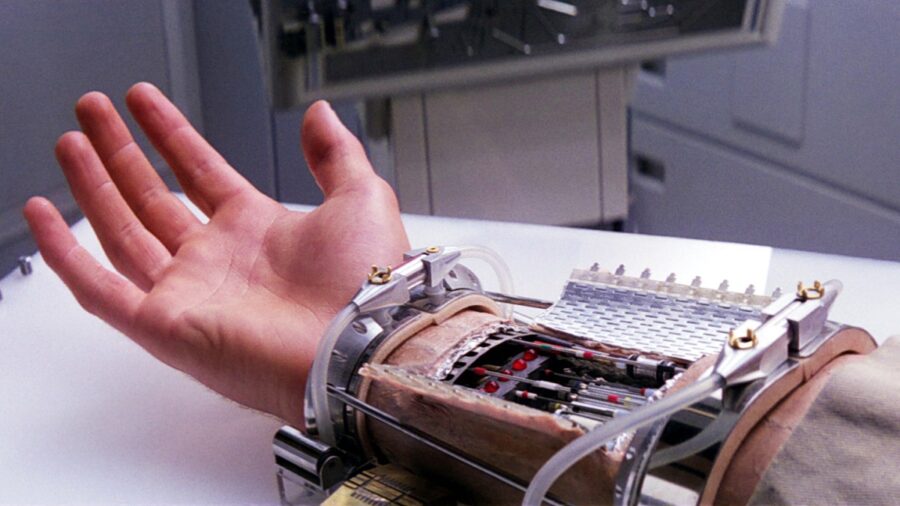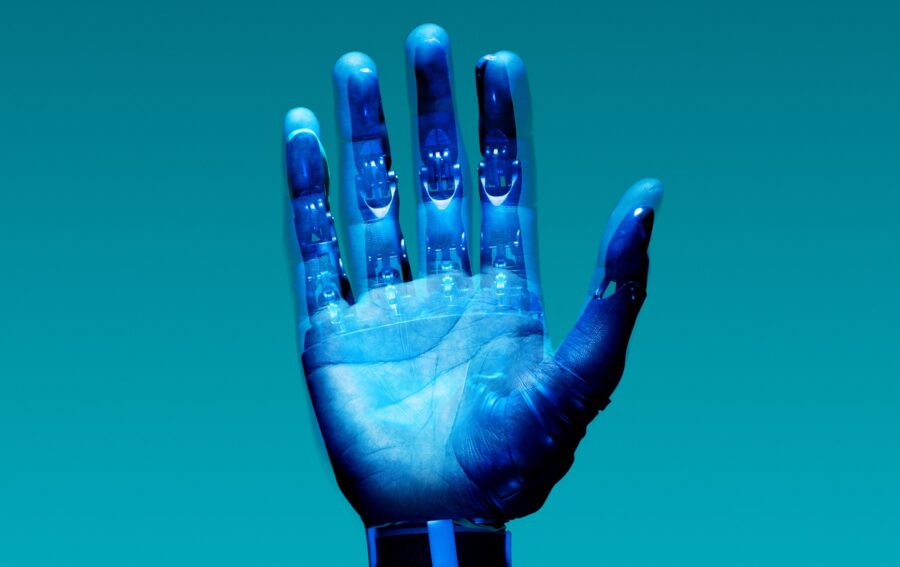Scientists Create Bionic Hand That Fuses With Bones, Muscles And Nerves

A 50-year-old Swedish woman may have just become the world’s first real cyborg. Thanks to unprecedented progress in the field of medical prostheses, a real, working bionic hand exists, and it’s exactly as cool as it sounds. As published in Science Robotics, the robotic limb revolves around trailblazing technology that connects directly to the user’s bones, muscles, and even nerves!
Cutting-edge technology has created a bionic hand that connects to human bone, muscle, and nervous system to work just like the real thing.
Karin (last name not known) lost her hand in a farming mishap only to receive the high-tech replacement nearly 20 years later. Karin’s new bionic hand hooks directly to her skeletal, muscular, and nervous systems, allowing an advanced AI to translate her brain signals via a human-machine interface. This interface allows Karin to engage in precise, simple movements as if she still had her original hand.
The bionic hand is so versatile it’s allowed Karin to perform 80 percent of her daily domestic activities such as cooking, lifting objects, zipping and unzipping bags or clothing, and most importantly, turning door knobs.
“I have better control over my prosthesis, but above all, my pain has decreased. Today, I need much less medication.”
Karin, proud owner of the new bionic hand
For two decades, Karin was forced to complete such everyday tasks left-handed, but thanks to her new bionic hand, she can go back to using her dominant hand. The prosthetic gives Karin a limited sense of touch and allows her to move all five of her cybernetic fingers separately with a 95 percent rate of success.
Perhaps even more of a relief to Karin is the decrease in pain she’s felt ever since being fitted with the bionic hand. Prior to receiving the bionic prosthesis, Karin experienced a constant phantom pain where her right hand used to be. The pain was so bad that Karin described it as her hand being dragged through a “meat grinder.”

“I have better control over my prosthesis, but above all, my pain has decreased,” Karin said, putting the bionic hand’s unprecedented level of control second behind the pain relief it’s given her. According to Karin, the relief is so substantial that she has been able to reduce the number of meds she has to take just to be able to function, or as she puts it, “Today, I need much less medication.”
“The fact that [Karin] has been able to use her prosthesis comfortably and effectively in daily activities for years is a promising testament to the potential life-changing capabilities of this novel technology for individuals facing limb loss.”
Max Ortiz, robotics engineer
An international team of researchers and engineers hailing from Sweden, Italy, and Australia came together to make Karin’s bionic hand a reality. The researchers claim Karin’s prosthetic marks the first time in history that a mechanical hand with internal electrodes has proven to have long-term viability in amputations that occurred below the elbow.
“The fact that [Karin] has been able to use her prosthesis comfortably and effectively in daily activities for years is a promising testament to the potential life-changing capabilities of this novel technology for individuals facing limb loss,” said robotics engineer Max Ortiz. Indeed, when Karin was initially fitted with the bionic hand three years ago, the researchers behind the technology stated that it was one of a kind—and it remains that way to this day.
To create the interface between Karin’s biological tissue and her bionic hand, two implants had to be placed inside her ulna and radius bones. A muscle graft taken from Karin’s leg was used as connective tissue to join the two implants and give the severed nerves and muscles in Karin’s arm something to attach themselves to. By anchoring Karin’s bionic hand directly to her bone, Catalán and crew made a prosthetic that’s more comfortable than conventional prostheses that use a “ball-and-socket” method.
Karin’s bionic hand is not only a medical marvel that provides hope to amputees everywhere but also the closest thing we nerds will ever get to a working version of Luke Skywalker‘s robot hand.
Catalan is currently working in war-torn Ukraine, providing his expertise on prosthetic limbs to amputees.












